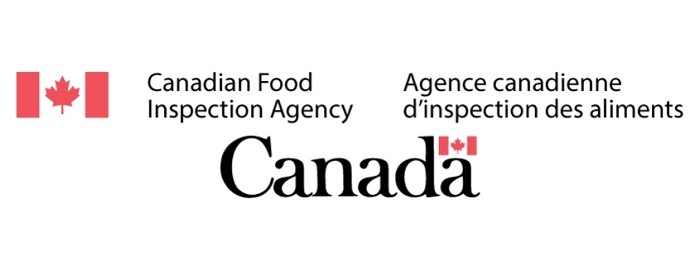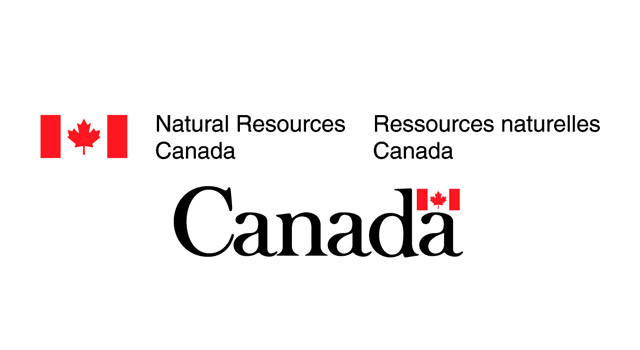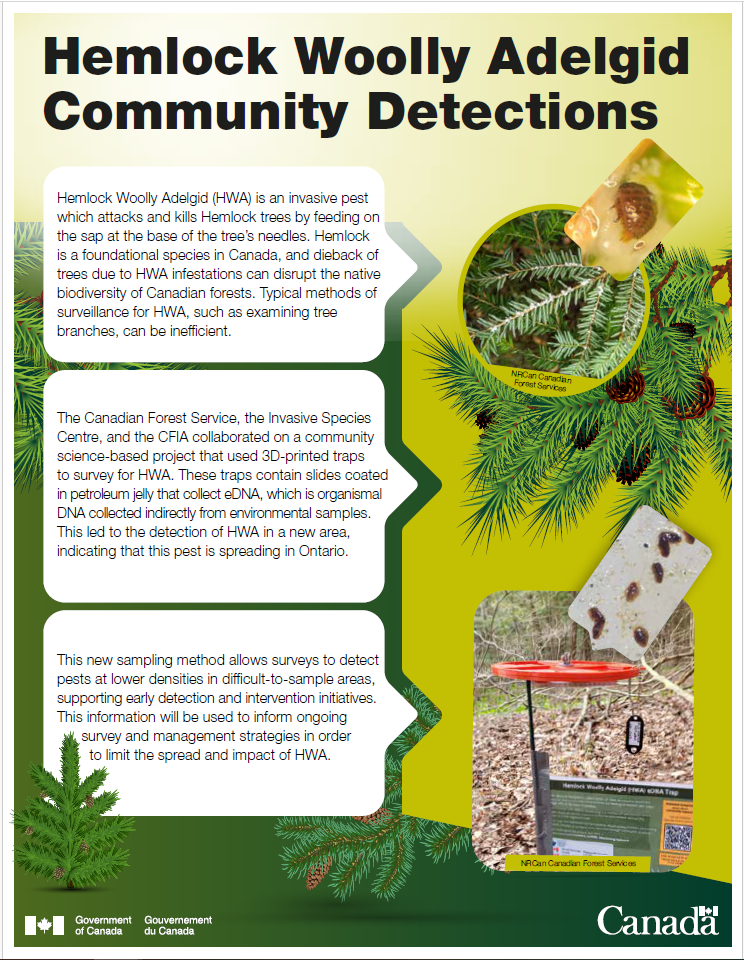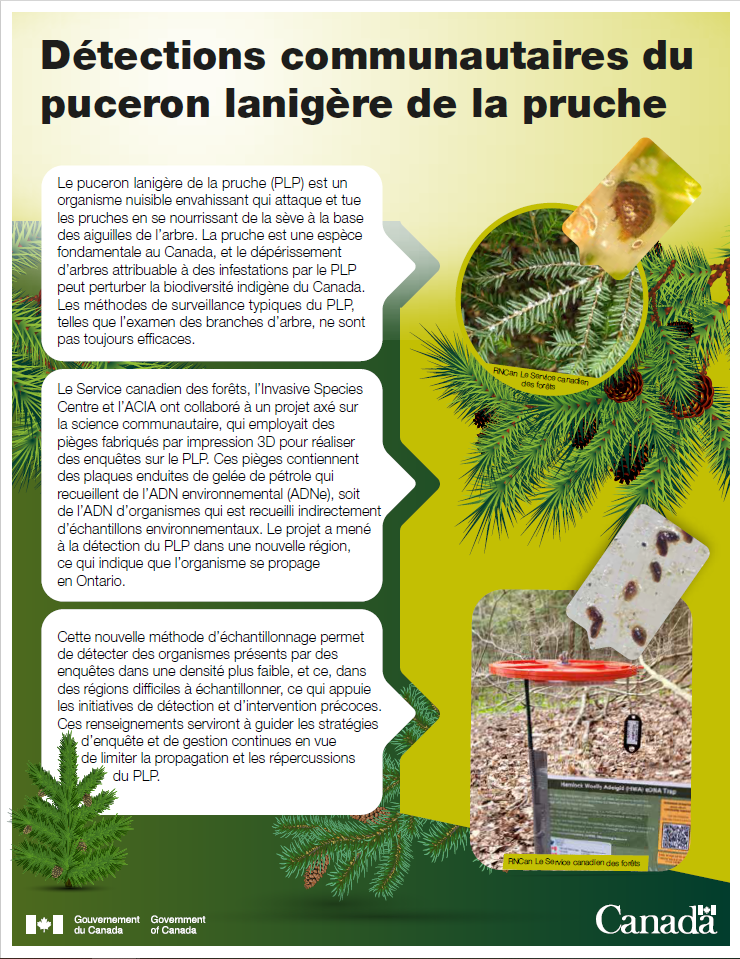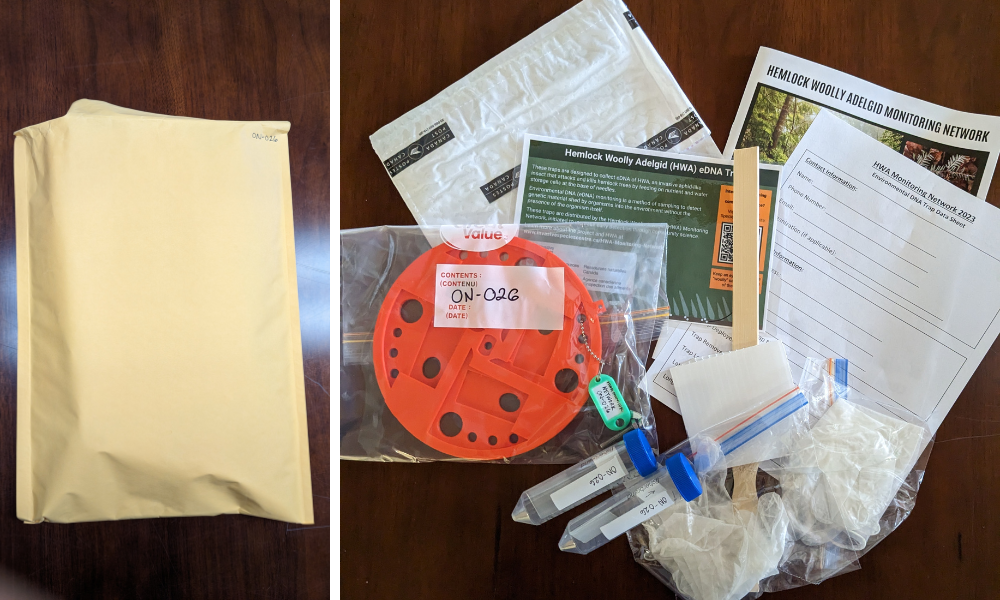
The Hemlock Woolly Adelgid (HWA) Monitoring Network was initiated to increase early detection of HWA outside of known distribution and regulated areas. This program is coordinated by Invasive Species Centre, in partnership with Natural Resources Canada (NRCan) and the Canadian Food Inspection Agency (CFIA).
The HWA Monitoring Network will be an invaluable source of information on the spread and distribution of hemlock woolly adelgid. The program offers a unique opportunity for community members to become actively involved in monitoring and stewardship of their woodlots.
Register to be considered for 2024 Monitoring season: HWA Monitoring Network eDNA Community Science Registration
What’s on this page:
What is Hemlock Woolly Adelgid?
Hemlock woolly adelgid (HWA) is an aphid-like insect (aphids suck fluid from plants) that attacks and kills hemlock trees by feeding on nutrient and water storage cells at the base of needles. Their most identifiable feature is the white woolly ovisacs which give them their name and that look like cotton balls or clumps of snow. HWA can spread naturally by wind and animals, and through human movement of nursery stock, logs, and other wood products including firewood.
HWA is federally regulated by the Canadian Food Inspection Agency (CFIA), which continues to monitor current populations.
Visit the HWA Species Profile or read the HWA Factsheet (French) to learn more about the insect!
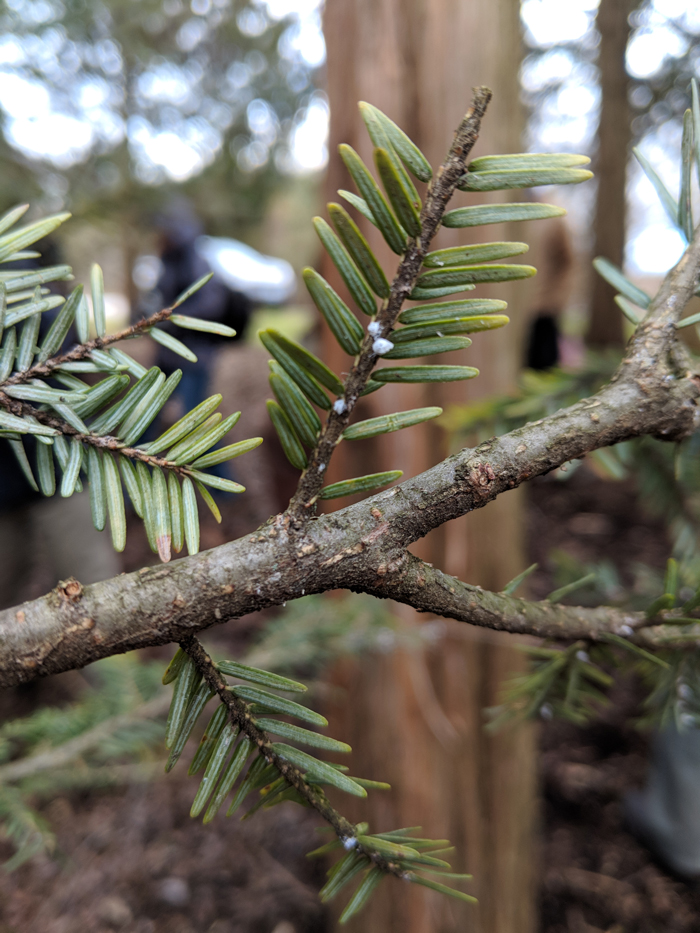
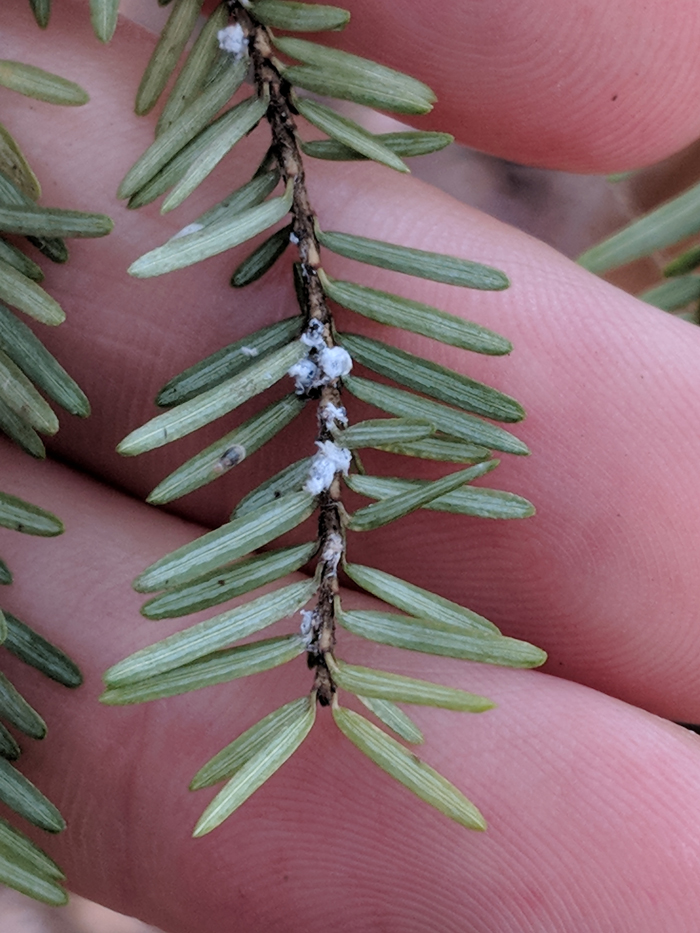
Why are Hemlocks Important?
Hemlock trees are an important ecological species on the landscape. Many birds use hemlock trees as a food source and for nesting and roosting sites. Hemlock trees are also commonly found in riparian areas, where they play an important role in regulating and maintaining water temperatures. For example, the canopies of hemlock trees can shade streams, cooling the water and making it habitable for brook trout. In winter, hemlock provides a valuable thermal cover to deer and birds during cold weather. Along riverbeds, hemlock also plays an important role in streambank stabilization, especially in steep gorges.
What’s at risk?
HWA can cause significant changes to hemlock ecosystems, impacting both living communities of flora and fauna and ecosystem services. Loss of eastern hemlock could result in changes in energy inputs, nitrogen cycling, microclimate environment, and physical environment, all of which could negatively affect the health of vegetation, birds, aquatic organisms, and mammals (Snyder et al., 1998). The loss of hemlock trees also makes forests vulnerable to invasive species that thrive in disturbed areas, like dog-strangling vine or garlic mustard.
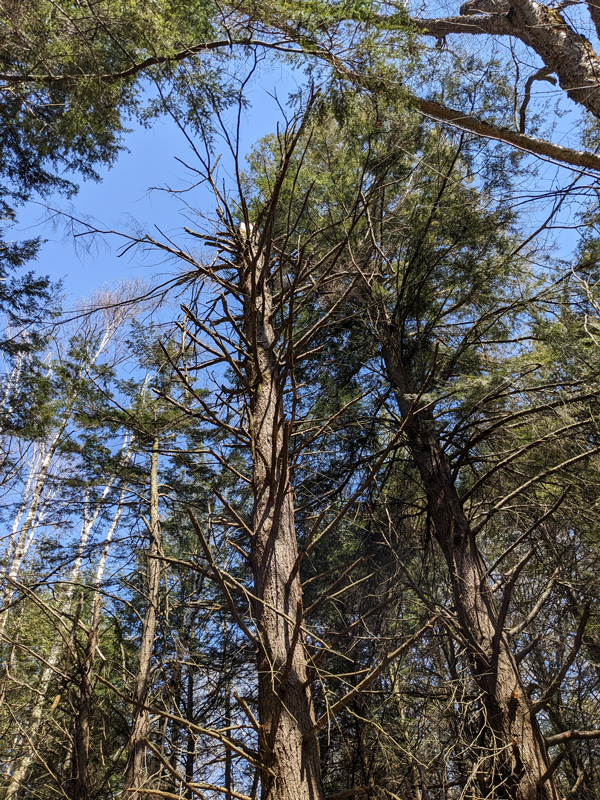
How to identify HWA?
HWA is extremely tiny and only grow to be as large as the tip of a sharpened pencil. While the insects themselves may be difficult to spot, the wool they create is not. HWA surrounds themselves in white wool as they grow, which protects their eggs from the cold winter temperatures later in the year.
Check the underside of branches for the white wool at the base of needles that resembles mini cotton swabs. If you see something that looks like white wool at the tips of the needles or on top of the branches, then it may be a look-a-like!
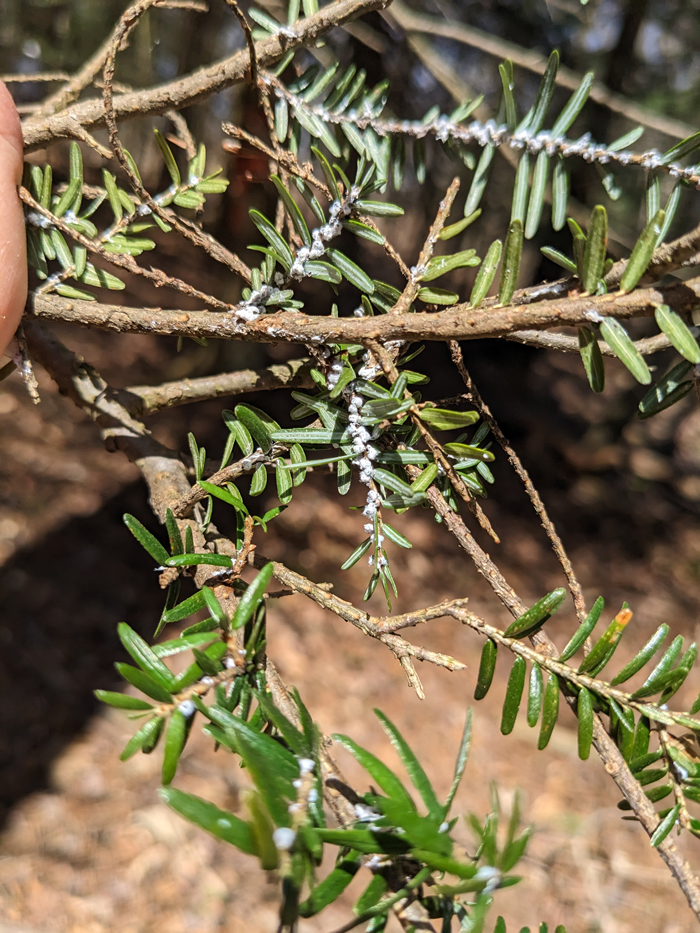
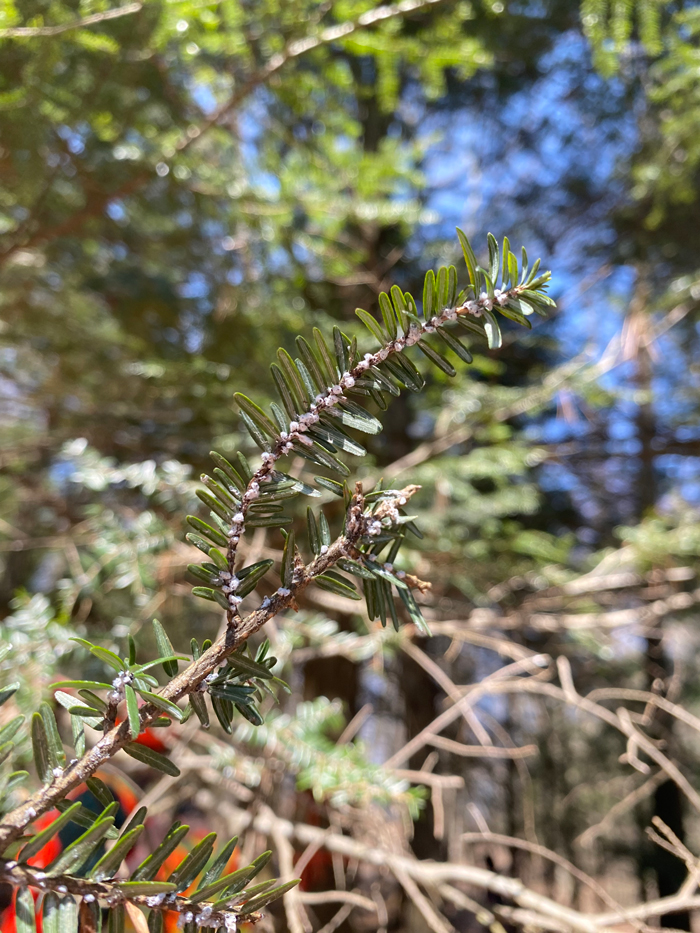
Commonly reported look-a-likes include spider eggs, other insects (i.e. beech scale), fungus, and fake spider webs for Halloween.
Help monitor for HWA
Successful control of the spread of invasive species and targeted increased awareness are dependent on the most accurate knowledge of distribution of invasive species possible. As a woodlot owner or forest manager there are many ways to integrate HWA monitoring into your forest management plan.
Are you a member of the public looking to help while you are already out in your community or in the forest? Visually check hemlocks for HWA while you’re hiking by!
Suspect HWA? Report to CFIA!
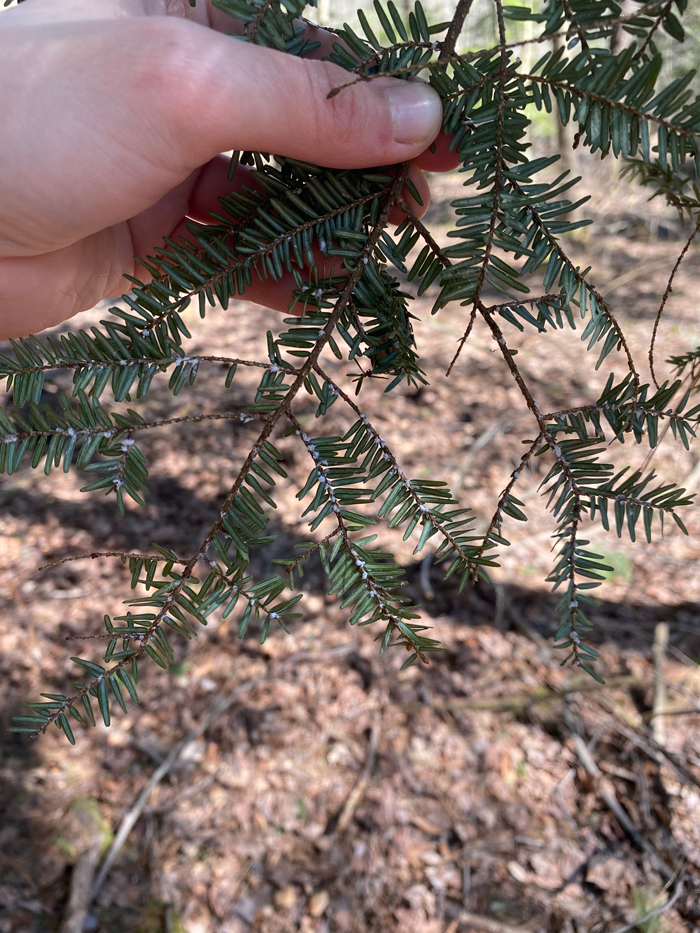
Check the underside of branches within reach
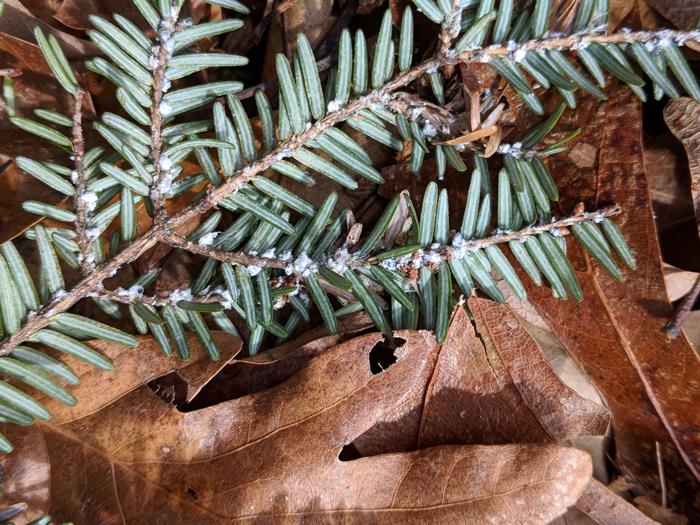
Check the ground for fallen branches
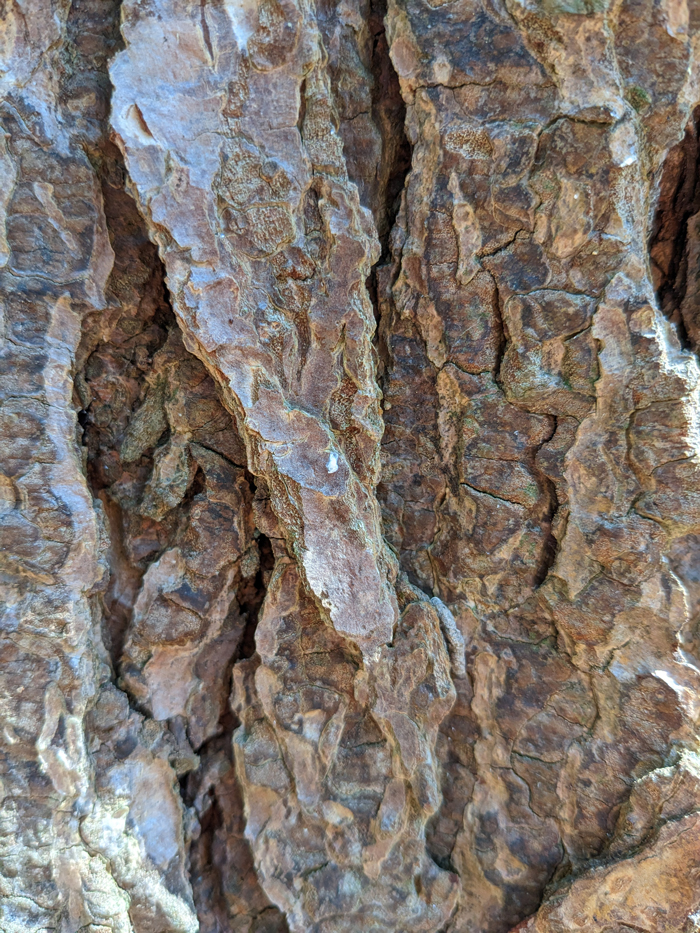
Check the bark of nearby trees for dislodged HWA
Bonus: Submit every check to Survey 123 to contribute to a better understanding of hemlock distribution and health in Ontario, even if you don’t suspect HWA!
The following outlines the associated costs and materials with different types of monitoring techniques as well as the pros and cons of each. This was created to help individuals and professionals decide which method is best for their woodlot and available resources.
| Methodology | Equipment Required | Relative Cost | Pros | Cons | Resources |
| Visual Surveys (foliage, non-cutting) | Binoculars (optional) Hand lens (optional) High powered head lamp (optional) | Low | Affordable Useable in most stands | Unreliable, especially in stands with very tall trees Difficult to detect early infestations Best done in spring only | – CFIA Visual Surveying method – Survey 123 – Survey 123 Infographic |
| Visual Surveys (foliage, cutting) | Pole pruner Hand lens | Low – moderate | Affordable Useable in most stands Can detect early infestations Can be done year-round | Labour intensive Can be difficult to cut with multiple extensions Equipment can be heavy Damages tree | See above |
| Visual Surveys (stem or forest floor) | Hand lens (optional) | Low | Affordable Useable in most stands Can be done year-round, may be more wool-abundance in spring and early summer | Unreliable, especially in early infestations | See above |
| Interception Traps | One or more of: 3D printed microscope slide trap with petroleum jelly dipped slides and a stand OR Sticky card trap and a stand And: Microscope | Moderate – high | Useable in most stands Low effort to sample | Requires a microscope and training to ID HWA Sticky traps collect a lot of bycatch Best done in spring only | – How to video – Sampling techniques to detect canopy infestations of the hemlock woolly adelgid |
| Ball Sampling | – Tennis ball slingshot & replacement slings – Racquet balls – Wooden beads – VELCRO® – Toothbrush – Gloves – Hard hat – Safety glasses | Moderate | Can detect early infestations Fairly affordable, equipment can be reused Can be performed spring and summer | Labour intensive You must DIY the sample balls Can be difficult in some terrain (e.g., slopes, along waterbodies, etc.) | – How to video – Sampling techniques to detect canopy infestations of the hemlock woolly adelgid |
| eDNA | One or more of: 3D printed microscope slide trap with petroleum jelly dipped slides and a stand OR Lindgren funnel trap with saltwater solution OR Hand clippers, water, and sample containers OR Sample containers And: Lab to run PCR analysis | High | Low sampling effort Can detect early infestations | Expensive Cannot tell you which individual trees are affected Requires a contracted laboratory to run analysis Best done in spring only | – HWA Monitoring Network Protocol |
Phytosanitary (Biosecurity) Protocol
HWA Monitoring Network eDNA Pilot
As part of the creation of the HWA Monitoring Network, the partners launched an environmental DNA (eDNA) community science pilot project. This involves the deployment of HWA interception traps that can capture both the insects themselves for visual analysis, and DNA for lab analysis. This offers a unique opportunity to potentially detect an infestation at earlier stages before they are abundant enough to be seen visually on the landscape.
What is eDNA? Environmental DNA is collected from environmental samples such as soil, water, or snow, rather than from individual organisms. As various organisms interact with the environment, DNA is expelled and accumulates in their surroundings from various sources.
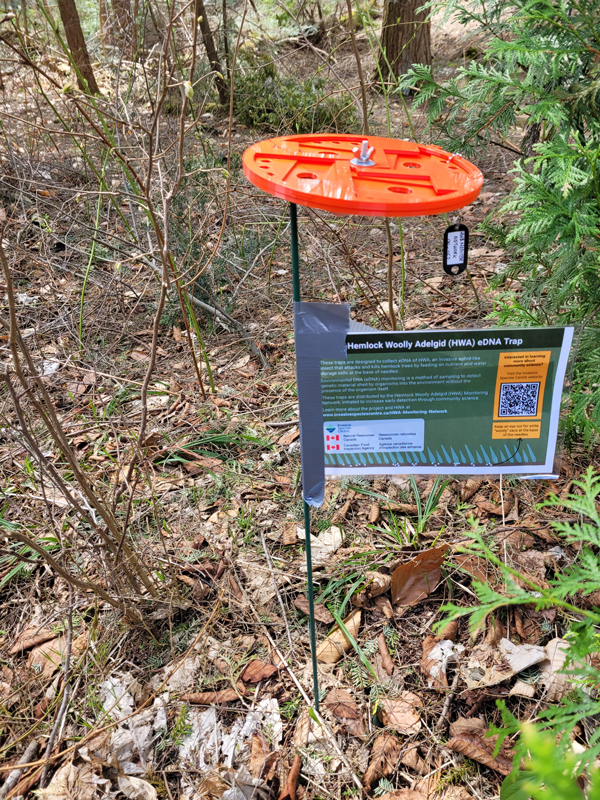
In this year’s pilot, the HWA Monitoring Network recruited volunteers to deploy 50 traps on public and private lands in the most at-risk areas in Ontario. The goal for this year is to refine the protocol and execution process of this project before expanding into more areas of Ontario and increasing the number of traps in at-risk areas for more continuous monitoring.
If you are interested in deploying a trap in your woodlot or the forest you manage, please sign up below to know when registration for next year becomes available.
Sign up mailing list here.
Plant Protection Act
This project is run in collaboration with the Canadian Food Inspection Agency (CFIA). Under the Plant Protection Act, any positive finding of HWA, a species of quarantine significance, may be followed up by the CFIA. By participating in the HWA Monitoring Network you acknowledge that should a species of quarantine significance be found, CFIA has the authority to contact you and/or visit the site for inspection.
We appreciate the support of our partners:
